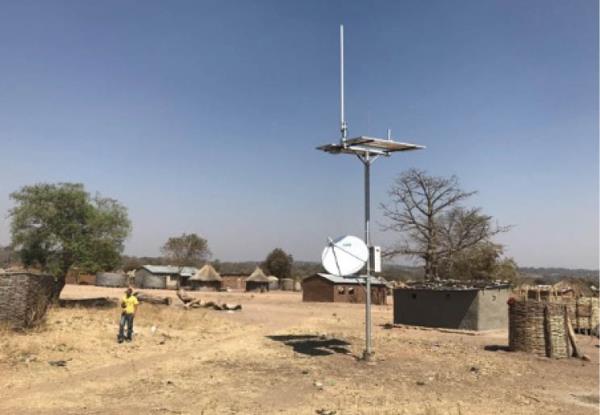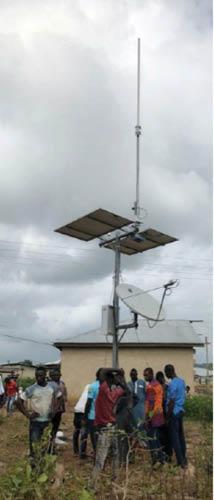09 March 2023

Demand for connectivity is booming across the world, and in particular in Africa, where an increasingly youthful population is demanding services equal to those found in Western regions.
According to the GSMA, sub-Saharan Africa has significantly reduced its coverage gap for mobile broadband in recent years. The coverage gap fell from 50% in 2014 to 19% in 2020, but this is still more than three times the global average of 6%.
While this is remarkable progress, the coverage gap in sub-Saharan Africa remains the highest globally. The region is home to 67% of the world’s population that are not covered by mobile broadband.
A key concern for reducing the gap is that the deployment of new sites in sparsely populated rural and remote areas is a significant economic challenge, as it can cost up to twice as much to deploy new base stations in rural areas than in urban ones and can be three times more expensive to run.
Africa Mobile Networks (AMN) is playing a key role in improving the commercial feasibility of rolling out mobile internet broadband networks and cellular backhaul over satellite is proving to be the ideal solution to expand a cellular network rapidly and efficiently to rural areas, thus helping bridge the digital divide and satisfy the growing demand for connectivity.

A cellular backhaul solution
AMN’s technology is optimized for rural Africa, combining low power and solar BTS transmitters with very small aperture terminal (VSAT) satellite technology directing traffic onto an existing network and using solar panels to power the systems.
AMN operated more than 2,000 base stations in 10 countries in 2021 and continued to launch new operations in additional countries throughout 2022; ultimately the company plans to cover almost every country in sub-Saharan Africa.
At the core of AMN’s vision is the use of highly advanced technology to enable services to be delivered more economically and sustainably to smaller communities than has been previously possible. Indeed, AMN is bringing 2G, 3G and 4G voice and data connectivity to towns and villages which have previously been unconnected.
To achieve this goal, AMN selected Gilat Satellite Networks to deliver more than 2,000 SkyEdge II-c Capricorn VSATS and to participate in plans of site migrations from 2G/3G to 4G, as the requirement for data communication rises.
“AMN selected Gilat due to its superior technology, to further extend Africa’s largest satellite cellular backhaul network constructed by AMN and powered by Gilat’s VSAT technology,” said Michael Darcy, CEO, AMN. “We are pleased to contribute to closing the digital divide by furthering the reach of our network to additional countries reaching more of the population in rural areas.”
The SkyEdge II-c-Capricorn family consists of high-performance VSATS ideal for vertical markets that demand high throughput and high-speed services, such as corporate networking, 3G and 4G/LTE cellular backhauling, IP trunking and mobility. Designed to work with high throughput satellites (HTS), Capricorn’s adaptive transmission technologies maximize performance, improve service availability, and reduce operational costs.
Gilat’s technology and deployment protocols ensure that AMN can deliver a reliable service, unaffected by weather conditions or sabotage. The ruggedized and locked boxes which contain the VSATS are strong enough to withstand natural and human damage so that minimal onsite technical support is needed.
AMN’s network is monitored 24x7 by its global network operations centre (GNOC) based at its headquarters near London, UK. The GNOC manages all changes to the network, under strict change-control procedures.
AMN’s network-as-a-service (NaaS) model allows Africa’s Tier-1 operators to expand their network coverage deep into rural areas with no CAPEX investment and no OPEX risk. According to AMN, this model is the most efficient way for MNOs to expand their rural coverage; the business model and the satellite technology behind it is both sustainable and profitable.
“Looking ahead to 2023, the partnership between Gilat and AMN will continue to grow,” said On Sobol, sales director, Gilat Satellite Networks. “AMN has aggressive plans to expand their network to include additional countries and join forces with new mobile network operators. In addition, they will be transitioning sites to 4G to enable an enhanced user experience and the ability to connect to even more remote villages. Gilat is extremely proud of our work with AMN in terms of the successful evolution of the project and our strong working relationship. Perhaps more importantly, this project is giving us the opportunity to help achieve our goal of bringing connectivity to everyone, everywhere around the globe.”







